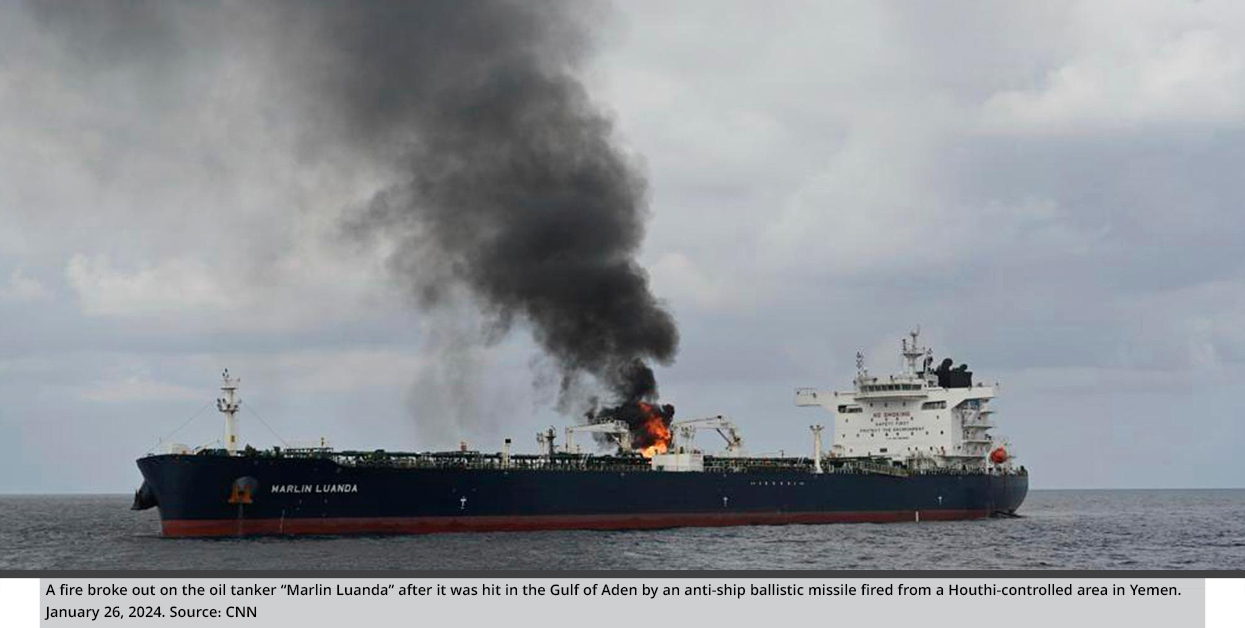How Will Washington Respond to the January 28 Attacks?
This situation assessment addresses the attack by Iranian-backed armed groups on “Tower 22,” a secret strategic U.S. military base. This unprecedented event led to the death of three American soldiers and had several implications for the region witnessing an escalation that could expand according to the nature of America’s response to the attack.
by STRATEGIECS Team
- Release Date – Jan 30, 2024

Armed groups supported by Iran carried out attack on the border strip between Jordan and Syria. According to the Pentagon, this is the first time that three American soldiers have been killed and more than 40 others injured since the war in the Gaza Strip began on October 7, 2023.
As the details of the attack gradually emerge, a number of questions have been raised about the reasons for the American delay in disclosing it, and how the drone managed to infiltrate the advanced defense bases, including the U.S. garrison in Al-Tanf, which is located only 12 miles from the target site known as “Tower 22,” a strategic military base.
These attacks are considered a turning point in the timeline of escalating warfare in the region, and they may have several implications that will be more clearly defined after the American options for retaliatory strikes are clarified based on their scope and location.
The Scene of the Attack
The attack, which was claimed January 28, 2024, by the Islamic Resistance in Iraq on its Telegram account, was part of a series of synchronized attacks against four targets. Three of those targeted by the umbrella group that includes a number of armed factions supported by Iran, were American bases near towns along the Jordanian-Syrian border: Shadadi, Rukban, and Tanf base. The fourth target was the Zevulun naval facility in Israel.
Since the outbreak of the war and the regional escalation that accompanied it, American forces in Syria and Iraq have been subjected to more than 160 drone and rocket attacks. While not all of them resulted in casualties or serious injuries, or even significant material damage, the United States has often responded with targeted strikes designed to avoid expanding the conflict in the region.
However, the January 28 attack is different in several important respects.
- It is an unprecedented attack in terms of the number of casualties among American soldiers in the rounds of escalation between the U.S. forces and the Iraqi armed groups since the outbreak of the war in the Gaza Strip on October 7, 2023.
- The scene of the attack was not expected, as reports indicate that the soldiers at the targeted base believed that the “bombed” drone was an American plane that was on a mission and was about to land inside the base.
- The base, known as “Tower 22,” remained secret until the attack was carried out and the Pentagon acknowledged it publicly for the first time. It houses approximately 350 American soldiers.
Attack and Motivations
It is clear that the attack was designed to cause casualties among American forces. The number of casualties is unprecedented, even in the most intense rounds of escalation between the two sides. It is unlikely that this number was due to a miscalculation. Rather, it indicates an accuracy of target selection and point of attack in order to cause the largest number of casualties and injuries among the American soldiers using only a large suicide drone.
In general, observers of the war’s escalation have noticed an evolution in the quality and quantity of attacks carried out by Iranian-backed armed groups in Lebanon, Yemen, Syria, and Iraq. The Houthis were able to target an oil tanker in the Red Sea with an anti-ship ballistic missile, which caused an onboard fire. This indicates that the Houthis’s capabilities are still effective in both surveillance and targeting despite the joint US-British airstrikes against Houthi facilities in Yemen and the intensification of U.S. and European naval military presence in the Red Sea.
In Lebanon, Hezbollah announced that it had used, for the first time in the war, an Falaq-1 missile with a high-explosive warhead against the Israeli Maale Golan barracks. In addition, the Islamic Resistance in Iraq has claimed several attacks against Israeli strategic facilities, including the Ashdod port and the Zevulun naval facility. Israel has not confirmed either attack.

It is likely that this expansion is linked to a number of variables, including the deepening of Israeli military operations in the southern Gaza Strip, specifically Khan Yunis, where Israel believes leaders of Hamas and Israeli prisoners can be found. In addition, Tehran feels the real risks that have begun to threaten its stand on the Palestinian issue. This includes risks related to its relationship with Palestinian armed factions and Washington’s insistence on plans for the day after the war based on the administration of the Palestinian Authority for the Gaza Strip and the West Bank in a way that excludes those factions and figures that have relations with Iran.
These risks have begun to affect both Iran and its allies. Israeli strikes have killed three of the most prominent commanders in the Islamic Revolution Guard Corps (IRGC) elite Quds Force, including Raed Mousavi, a high-ranking general in charge of logistics and support, his deputy, and an intelligence officer.
The United States and European countries are showing their determination to undermine the ability to launch successful naval attacks by mobilizing their warships into the Red Sea. This imposes on Iran to redistribute the geography of escalation, ease the pressure on it and its allies, and disperse the American military effort between multiple fronts.
Options for Response
In January 2020, the escalation between Iraqi armed groups and U.S. forces led to a U.S. drone attack that assassinated Qasem Soleimani, the commander of the IRGC’s Quds Force. The strike was aimed at putting an end to attacks against U.S. soldiers and diplomatic missions by deterring Iran from conducting or condoning any future attacks.
In light of these goals, it is likely that the shape and scope of the U.S. response to the killing of three of its soldiers in January 2023 will be similar, with key differences between the two incidents. In 2020, there was a fear of dragging the region into escalation whereas today the region is experiencing an unprecedented state of escalation throughout its breadth. This is sure to be considered in any U.S. retaliatory strike.
Despite the state of near certainty regarding an expected U.S. strike—which was confirmed by a Pentagon statement on the agreement between U.S. President Joe Biden and Defense Secretary Lloyd Austin that a military response was needed, as well as the trends of political and military officials in favor of the retaliatory strike—it is difficult to predict the shape and scope of that strike.
Will it be a single strike or a series of graduated strikes?
Will it target armed groups or Iranian assets and personnel?
Will it strike Iranian targets from within or outside Iran itself.
From these questions, it is possible to predict the set of U.S. options for response.
The Decisive Response
This option involves striking Iran inside its own territory, targeting and destroying military manufacturing facilities, specifically drone factories or Iranian ports. Launching such a strike would be the strongest use of the concept of deterrence against Tehran, and decisive in terms of its damage, which would exceed the January 28 attacks. However, this option could have several repercussions, including expanding Iran's future response options, which it would be forced to do after it waived its response to the Pakistani strikes in its territory.
Proportional Response
This option would include striking Iranian targets outside its territory or launching a series of violent raids against Iranian-backed armed groups, specifically Hezbollah Brigades, which Washington believes carried out the attack. This option is the most likely in terms of its proportionality to the January 28 attacks, and it does not create a state of mobilization in Iran that would push it to retaliate. Iran has overlooked Israeli airstrikes that killed three commanders of the Quds Force in Syria and this option would raise the level of deterrence between the two sides.
Defensive Response
In this option, the strikes would be limited to Iranian-backed armed groups and similar to previous strikes that targeted headquarters or the field commanders in those groups. However, this option is excluded due to its failure to achieve deterrence, and it could encourage the continuation of attacks against American forces at a higher pace.
Finally, the American response within the three previous options is governed, in addition to the escalation in the region, by a number of constraints within the United States, especially the launch of the American elections and Biden’s need for more regional stability that does not negatively affect his chances of getting re-elected. At the same time, he faces accusations of being weak against Iran, especially from Republicans. All of this pushes for the preference of the proportional response option.

STRATEGIECS Team
Policy Analysis Team
 العربية
العربية